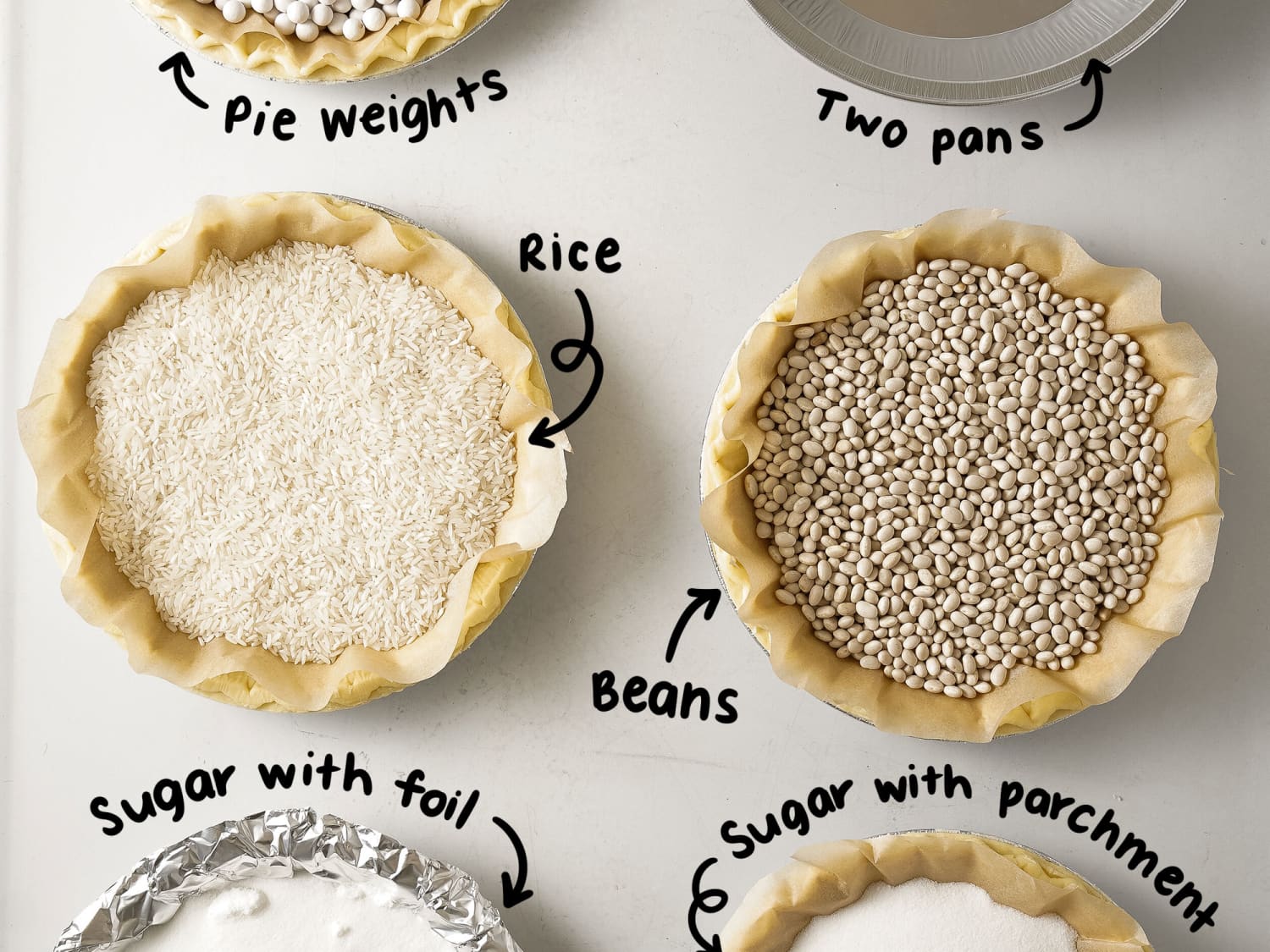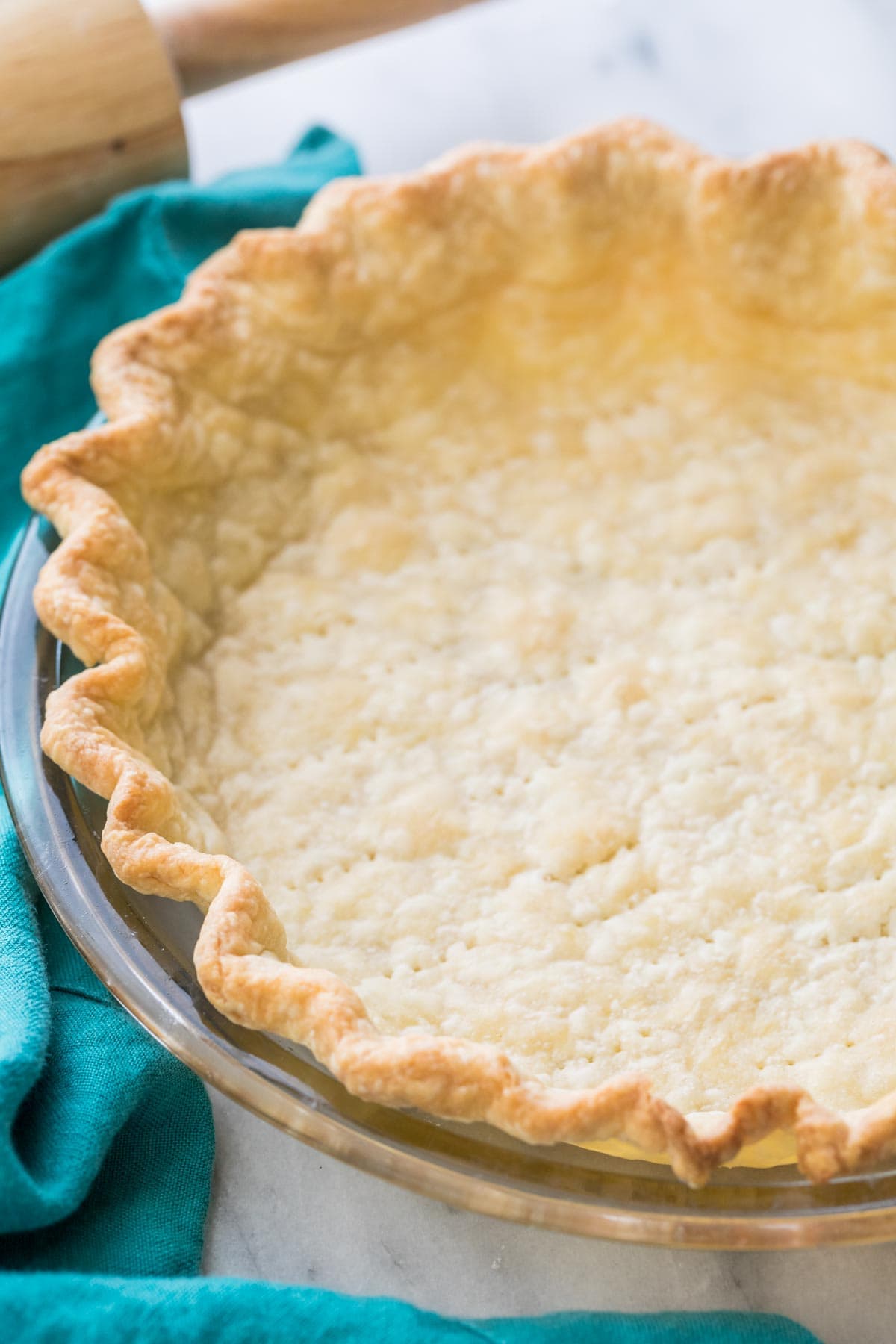As a professional chef, I have encountered countless culinary challenges throughout my career. But one technique that has always been a game-changer in the world of baking is mastering the art of blind pie crust. Whether you’re a seasoned home baker or a culinary enthusiast, this skill is essential for creating perfectly golden, flaky pie crusts that will make your taste buds dance with delight. So, grab your rolling pin and get ready to embark on a delicious journey as I unveil the secrets behind baking blind pie crusts. Get ready to elevate your baking game to new heights and impress your friends and family with impeccable pies that will leave them craving for more. Let’s dive in!
How to Bake Blind Pie Crust: A Foolproof Guide and Recipe
Introduction:
Baking a perfectly golden and flaky pie crust can sometimes be a daunting task, especially when it comes to blind baking. But fear not, as we have crafted a foolproof guide to help you achieve that buttery goodness. Whether you’re making a classic fruit pie or a savory quiche, mastering the technique of blind baking will take your pies to the next level.
Ingredients:
– 1 ¼ cups all-purpose flour
– ½ teaspoon salt
– ½ cup unsalted butter, cold and cubed
– 3-4 tablespoons ice water
General Information:
Making Difficulties: Moderate
Preparation Time: 20 minutes
Cooking Time: 15-20 minutes
Instructions:
Step 1: Prepare the Crust
Pastry crust is the foundation of any great pie. In a large mixing bowl, whisk together the flour and salt. Add the cold, cubed butter and use a pastry cutter or your fingertips to cut the butter into the flour until the mixture resembles coarse crumbs. Be careful not to overwork the dough as you want the butter to remain cold. Gradually add the ice water, a tablespoon at a time, and mix until the dough forms a ball. Flatten the ball into a disk, wrap it in plastic wrap, and refrigerate for at least 30 minutes.
Step 2: Roll Out the Dough
Once chilled, remove the dough from the refrigerator and let it sit at room temperature for a few minutes to slightly soften. Lightly flour a clean surface and roll out the dough into a circle that is about 12 inches in diameter. Transfer the rolled-out dough to a 9-inch pie dish, gently pressing it into the bottom and sides. Trim any excess dough, leaving about a 1-inch overhang to allow for shrinkage during baking.
Step 3: Preheat the Oven and Blind Bake
Preheat your oven to 375°F (190°C). To prevent the crust from puffing up during blind baking, prick the bottom of the crust all over with a fork. Line the crust with parchment paper or aluminum foil, pressing it gently against the sides and bottom. Fill the lined crust with pie weights or dried beans, evenly distributed to ensure the crust maintains its shape. Place the pie dish on a baking sheet to catch any potential spills and bake in the preheated oven for 15-20 minutes, or until the crust starts to set and becomes lightly golden.
Step 4: Remove the Weights and Continue Baking
Carefully remove the pie weights or beans and the parchment paper or foil from the crust. Return the crust to the oven and continue baking for an additional 5-10 minutes, or until the crust is golden brown and fully cooked. Keep an eye on the crust to avoid overbaking or burning. Once baked, remove the pie crust from the oven and let it cool completely before filling with your desired pie filling.
Step 5: Patch Up Any Cracks
Sometimes, despite our best efforts, a crack or two may appear in the blind-baked crust. But don’t fret! To patch up any cracks, simply mix a small amount of softened butter with some flour to create a paste. Gently press the paste into the cracks and smooth it out with your fingertips. Allow the crust to cool completely before filling.
Step 6: Fill and Bake Again
With your blind-baked crust now cool and crack-free, you’re ready to fill it with your favorite pie filling. Whether it’s luscious berries, caramelized apples, or a savory custard, pour the filling into the cooled crust and smooth it out evenly. Refer to your specific pie recipe for baking instructions, but generally, you will bake the filled pie until the filling is set and the crust is beautifully golden.
Step 7: Enjoy the Fruits of Your Labor
Once the pie has cooled to room temperature, it’s time to enjoy your masterpiece. Slice a generous piece and savor the buttery crust and delicious filling. Whether you’re sharing it with loved ones or indulging in a solo treat, your beautifully blind-baked pie crust will surely bring joy and satisfaction.
In summary, blind baking your pie crust is a crucial step to achieve that perfect balance of crispiness and tenderness. Remember to use cold butter, thoroughly chill the dough, and properly blind bake to avoid a soggy bottom crust. Patch up any cracks, fill with your desired filling, and bake until perfection. The end result will be a show-stopping pie that will have everyone asking for seconds. So roll up your sleeves, grab your rolling pin, and embark on your blind baking adventure. Happy baking!
Important things to keep in mind when making this “How to Bake Blind Pie Crust” recipe
Nothing is quite as satisfying as a homemade pie, with its buttery crust and delicious filling. But before you can dive into the sweet or savory goodness, you need to master the art of blind baking the pie crust. Blind baking, or pre-baking the crust before adding the filling, ensures that the crust is cooked through and remains crisp, especially when using wet fillings. To help you on your journey to pie perfection, here are some important things to keep in mind when making this “How to Bake Blind Pie Crust” recipe.
The first thing to remember is that you need the right ingredients for your crust. Opt for a pastry that is both buttery and flaky, but also sturdy enough to hold the filling. A classic all-butter crust strikes the perfect balance, but if you prefer a lighter option, consider using a combination of butter and shortening. Also, make sure all your ingredients are chilled, including the water, as cold ingredients help create a flaky crust.
Next, give your dough enough time to rest. Resting allows the gluten in the flour to relax, making the dough easier to roll out and preventing shrinkage during baking. Wrap the dough in plastic wrap and refrigerate for at least an hour, or overnight if you have the time. This will also enhance the flavor of your crust.
When rolling out the dough, don’t forget to flour your work surface and rolling pin generously. This will prevent the dough from sticking and tearing as you transfer it to the pie dish. Remember to roll the dough out to about 1/8-inch thickness, ensuring an even layer that will bake evenly. If the dough starts to warm up and become difficult to work with, pop it back in the fridge for a few minutes to firm up.
Now comes the crucial step of blind baking the crust. To avoid a soggy bottom, you need to weigh down the dough during baking. Line the chilled crust with parchment paper or aluminum foil, then fill it with pie weights or dried beans. The weights will prevent the crust from puffing up and losing its shape while it bakes. Bake the crust in a preheated oven for about 15 minutes, then carefully remove the parchment paper and weights and continue baking for another 5-10 minutes, or until the crust turns golden brown.
In conclusion, mastering the art of blind baking is essential for achieving a perfectly baked pie crust that can hold up to any filling you desire. Choose the right ingredients, let the dough rest, and roll it out with care. And remember to weigh down the crust during blind baking to avoid any disappointments when the time comes to indulge in a slice of pie. So get ready to delight your family and friends with your beautifully crafted pies, all thanks to your newfound knowledge of blind baking.
Frequently Asked Questions
When it comes to baking blind pie crust, we understand you may have some questions. We’re here to help! Check out these commonly asked questions and find out everything you need to know about baking a perfect blind pie crust.
1. What is a blind pie crust?
A blind pie crust refers to a pie crust that is partially or fully pre-baked before adding the filling. It is done to ensure that the crust bakes evenly and doesn’t become soggy when filled with moist ingredients.
To blind bake a pie crust, you typically line the crust with parchment paper or aluminum foil, then fill it with pie weights (or dried beans) to prevent it from puffing up. This process gives the crust a head start in baking, allowing it to crisp up and hold its shape.
2. Why do I need to blind bake a pie crust?
Blind baking a pie crust is essential for pies with fillings that don’t require further baking or have a shorter baking time. Pie fillings like custards, cream pies, or no-bake fillings would result in an undercooked or soggy crust if not blind baked.
By pre-baking the crust, you create a barrier between the crust and the moisture from the filling, preventing a soggy bottom. The crust also gets a chance to turn golden brown and crisp up, providing a delicious contrast in texture to the filling.
3. Can I blind bake any type of pie crust?
Most traditional pie crusts can be blind baked, including both store-bought and homemade versions. However, some recipes may have specific instructions or variations, so it’s always good to refer to the recipe you’re using.
Keep in mind that delicate crusts like graham cracker or cookie crusts may not require blind baking since their textures are naturally crumbly and don’t become as soggy when filled with wet ingredients.
4. How do I blind bake a pie crust without pie weights?
If you don’t have pie weights, you can use alternatives like dried beans, rice, or even sugar to weigh down the crust while blind baking. Simply line the crust with parchment paper or aluminum foil, then pour the alternative weight evenly over the surface to prevent it from puffing up.
Just remember, if you use beans or rice as a substitute, they won’t be suitable for cooking afterward, so it’s best to designate them as your dedicated pie weights.
5. How long should I blind bake a pie crust?
Blind baking times can vary depending on the recipe and the specific crust you’re using. A general guideline is to blind bake the crust for around 15-20 minutes at 375°F (190°C). However, always refer to the recipe for the most accurate instructions.
It’s essential to keep an eye on the crust while blind baking and check for a light golden color. Once the crust is golden, you can remove the pie weights and continue baking for a few more minutes until it reaches the desired level of doneness.

